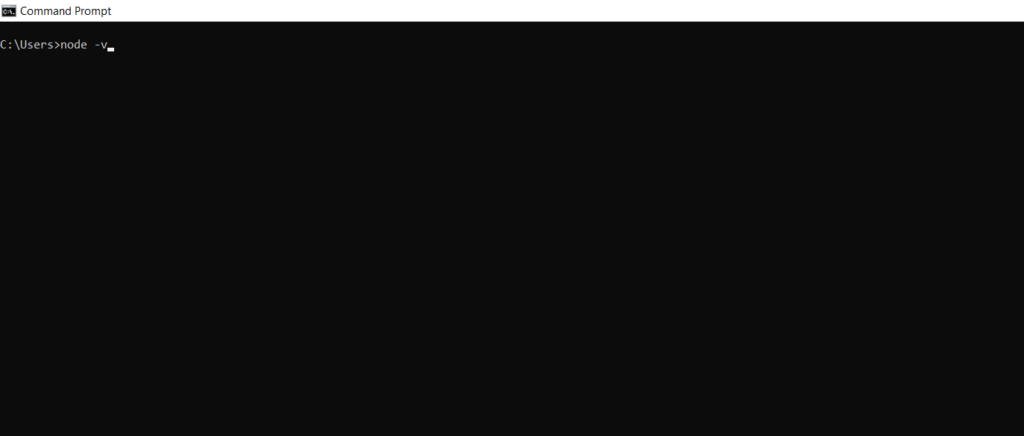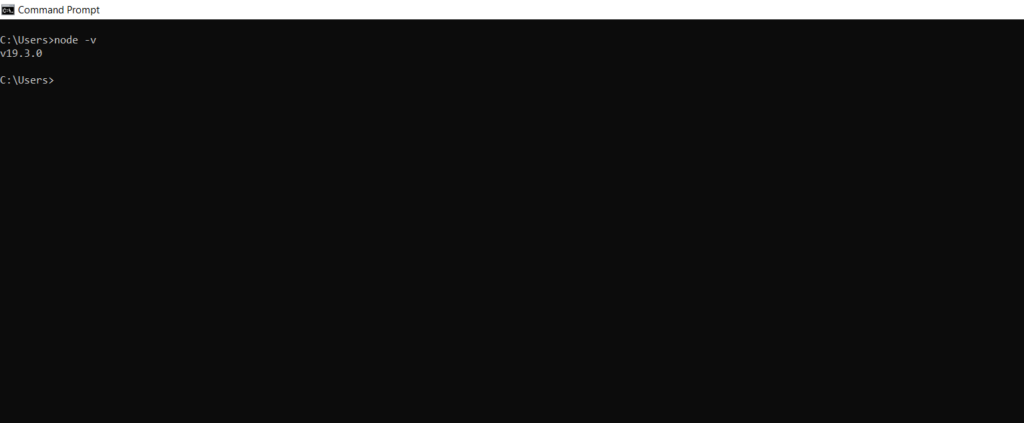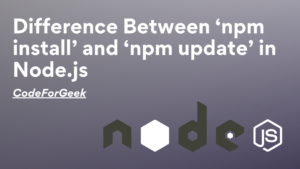Node.js is constantly evolving and new versions are coming out very frequently. We can update Node installed on our system to get the new version with new features and bug fixes but with regular installing updates it becomes hard to keep track of which version we last installed.
Well, it is very important to know as different projects may require different versions for compatibility. Even most libraries on NPM are not up to date so it is possible that they require an older version. So we must be aware of our Node.js version number to update it or downgrade it according to the requirements.
In this article we will focus on only checking the Node.js version, but if you want to update or downgrade Node.js, here is the article for that: How to Update Node to Any Version
Why Node Version Matters
Node.js is a powerful runtime environment for executing JavaScript on the server side. It is used in a variety of applications from creating web servers to running scripts. With a huge variety of use cases, it is important to be aware of version numbers.
Below are some reasons why checking the version of Node.js is important.
1. Compatibility: Different projects or apps sometimes need a particular Node.js version to work properly. By knowing your version, you make sure you have the right one for the job.
2. Security: Keeping Node.js up to date is like upgrading the lock of your house’s front door. Newer versions usually fix security issues from older ones, making your applications safer.
3. Performance: Think of updates like a turbo boost for your car. Node.js updates can make your apps run faster and smoother, giving your users a better experience.
4. Bug Fixes: No software is perfect, and bugs can pop up. Newer Node.js versions come with fixes for these bugs and other improvements, making sure your code runs without hiccups.
In a nutshell, checking the Node.js version is a small step that can have a big impact on your projects. It’s all about making sure your software runs well, stays secure, and plays nicely with everything it needs to.
Getting Node.js Version on the Command Line
The command line, also known as the terminal or command prompt, is a text-based interface where you can communicate with your computer. The steps to check the Node version using the command line are simple, so let’s begin.
Step 1: Open the Command Line
- On Windows: You can open the Command Prompt by pressing the Win + R keys, typing “cmd,” and hitting Enter.
- On macOS: You can open the Terminal by searching for it in your Applications or using Spotlight search.
- On Linux: You can typically find the terminal application in your system’s applications menu.

Step 2: Run the Node.js Version Command
Once you have the command line open, you will see a blinking cursor. That’s where you type in commands.
To check your Node.js version, all you need to do is type the following command and press Enter:
node -v
or
node --version

Step 3: View the Result
After you press Enter, you’ll see a response on the screen. It will look something like this:
v19.3.0

This response tells you the version of Node.js you have installed on your computer. In the example above, it’s showing that Node.js version 19.3.0 is installed.
Getting NPM Version on the Command Line
Whenever you install Node.js, NPM(Node Package Manager) automatically comes with it, but sometimes you install it manually. In some cases, you need to know which version you are using during development. You can easily get the current version of NPM you have installed using the command line.
Follow step 1 in the previous section to open the command line, then execute the following command to check the version of npm installed on your system:
npm -v

We have successfully got versions of Node.js and NPM using the command line.
If you are new to Node.js:
- What is Node.js?
- Asynchronous Programming in Node.js – Callback, Promises & Async/Await
- How to send an HTML File in Node.js?
Frequently Asked Questions (FAQs)
What is Node.js used for?
Node.js is used for creating server-side, networking and web applications. It can create dynamic pages, create, read, update, and delete files, it can also handle incoming form data, interact with all types of databases, and much more.
How to check Node.js version in cmd?
To check your Node.js version using cmd, you need to run the “node -v” command. This will display the installed Node.js version.
How do I check my NPM version for Node?
You can get the NPM version for Node by running the command “npm -v” in the command line.
How do I check for Node.js version update?
The best way to check for Node.js version updates is to visit the official Node.js website. Another way is to use the NPM package name “npm-check-updates” but this can be an unnecessarily complicated process.
How to check if Node is installed in cmd?
You can run the command “node -v” in the command line and if it returns a version it means Node.js is installed in your system, if not it will throw an error.
How to update Node.js using cmd?
You can use NPM to update Node.js to the latest version by running the command “npm install -g node”.
How do I check my NVM?
NVM stands for Node Version Manager. You can check the NVM version by running the “nvm –version” command in cmd.
How do I see all installed Node versions?
You can see all installed Node JS versions by running the “nvm list” command in cmd.
Conclusion
We have reached the end of this article, and we hope it provided you with a clear understanding of how to check your NodeJS version from the command line. Knowing your Node.js version might seem like a small detail, but it’s an essential practice for any developer. It ensures that your projects are in the best shape possible.
By keeping your Node.js up to date, you are doing more than just avoiding potential issues. You are also opening the door to improved performance and benefiting from valuable bug fixes. It’s like giving your software a little boost, making it run faster and smoother.
Reference
https://stackoverflow.com/questions/14888471/node-js-version-on-the-command-line-not-the-repl





